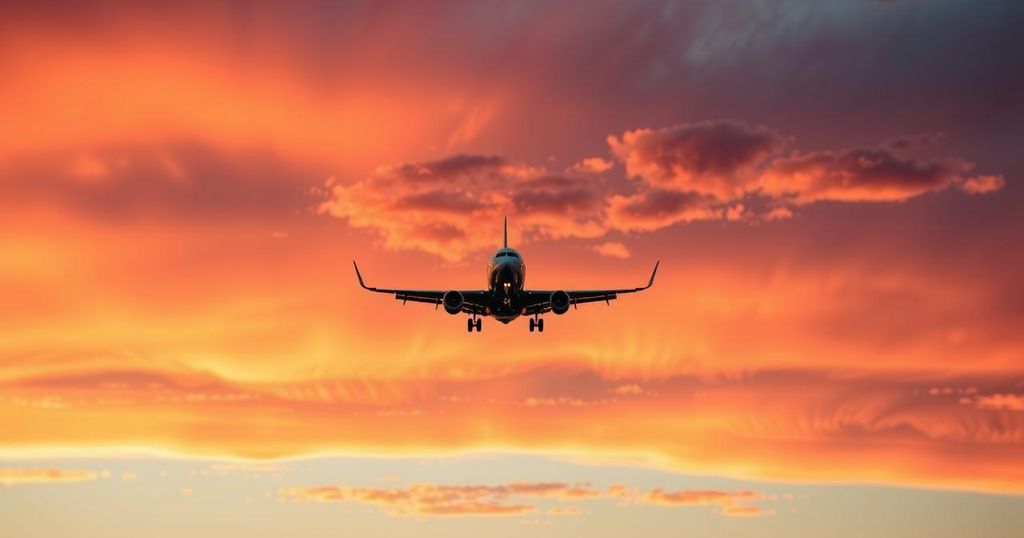Trump Administration Launches First Self-Deportation Flight Amid Controversy

The Trump administration conducted its first self-deportation flight from Houston, where 64 immigrants volunteered to leave in exchange for $1,000. The initiative is part of DHS’s Project Homecoming but has raised concerns regarding the fulfillment of promised stipends and potential legal ramifications for participants. Critics caution about the risks involved, notably regarding a decade-long bar on re-entry for certain individuals. Meanwhile, significant changes to immigration protections for Venezuelan immigrants add to the growing debate surrounding the administration’s immigration policies.
In a significant move, the Department of Homeland Security (DHS) oversaw what is described as the first “self-deportation” flight under the Trump administration on Monday. From Houston, 64 immigrants, who volunteered for this program, took to the skies. In return for their departure, each individual received a $1,000 stipend and a chance to return to the U.S. legally in the future.
Homeland Security Secretary Kristi Noem emphasized the program, stating, “If you are here illegally, use the CBP Home App to take control of your departure and receive financial support to return home.” The gravity of the consequences was clear as she warned that not participating could result in arrest, fines, and an indefinite prohibition from return.
This flight was conducted as part of the DHS Project Homecoming initiative, which was unveiled earlier this year. It took off carrying 38 passengers to Honduras and 26 to Colombia. This new plan highlights the administration’s ongoing commitment to an aggressive immigration enforcement strategy, even though, frustratingly, the anticipated removals have not yet met their target.
To be considered for this voluntary removal program, immigrants must utilize the CBP Home mobile app to express intent to leave. The DHS also assured that those intending to self-deport would be prioritized in various processes to facilitate their departure, thus avoiding detention.
It’s worth noting, though, that while this was heralded as the program’s first flight, a prior government-supported flight for an immigrant self-deporting from Chicago to Honduras occurred earlier this year. On the same day, significant legal decisions emerged, notably the U.S. Supreme Court permitting the revocation of protections for nearly 350,000 Venezuelan immigrants under the Temporary Protected Status program.
Critics have raised eyebrows at this initiative, citing concerns over the administration’s trustworthiness in following through with its $1,000 incentives, with fears that immigrants may not receive the promised financial support. Maribel Hastings from America’s Voice expressed skepticism, highlighting that many immigrants have contributed to the economy and deserve legalization, not just a monetary incentive to leave.
Aaron Reichlin-Melnick from the American Immigration Council also cautioned potential participants. He pointed out the risks involved, especially since undocumented immigrants who have lived in the U.S. for over a year could face a decade-long bar from re-entry. Moreover, the assurance that return may be possible in the future is ambiguous and perhaps hollow.
Historically, self-deportation strategies are not new in political discourse, recalling Mitt Romney’s proposal in 2012, which Trump himself previously labeled as questionable. As this initiative unfolds, the implications for those living in the shadows remain uncertain and multifaceted.
The reactions to these policies and flights will continue to shape the conversation around immigration in America, as communities hold their breaths awaiting concrete results and accountability from the administration itself.
The first self-deportation flight organized under the Trump administration marks a bold step in immigration reforms, offering financial incentives for undocumented immigrants to voluntarily leave the United States. However, this initiative has garnered skepticism regarding its implementation and the government’s reliability in fulfilling promises made to participants. Legal complications further loom over potential participants, emphasizing the need for comprehensive understanding and legal advice amidst these challenging and often precarious circumstances.
Original Source: www.texastribune.org








